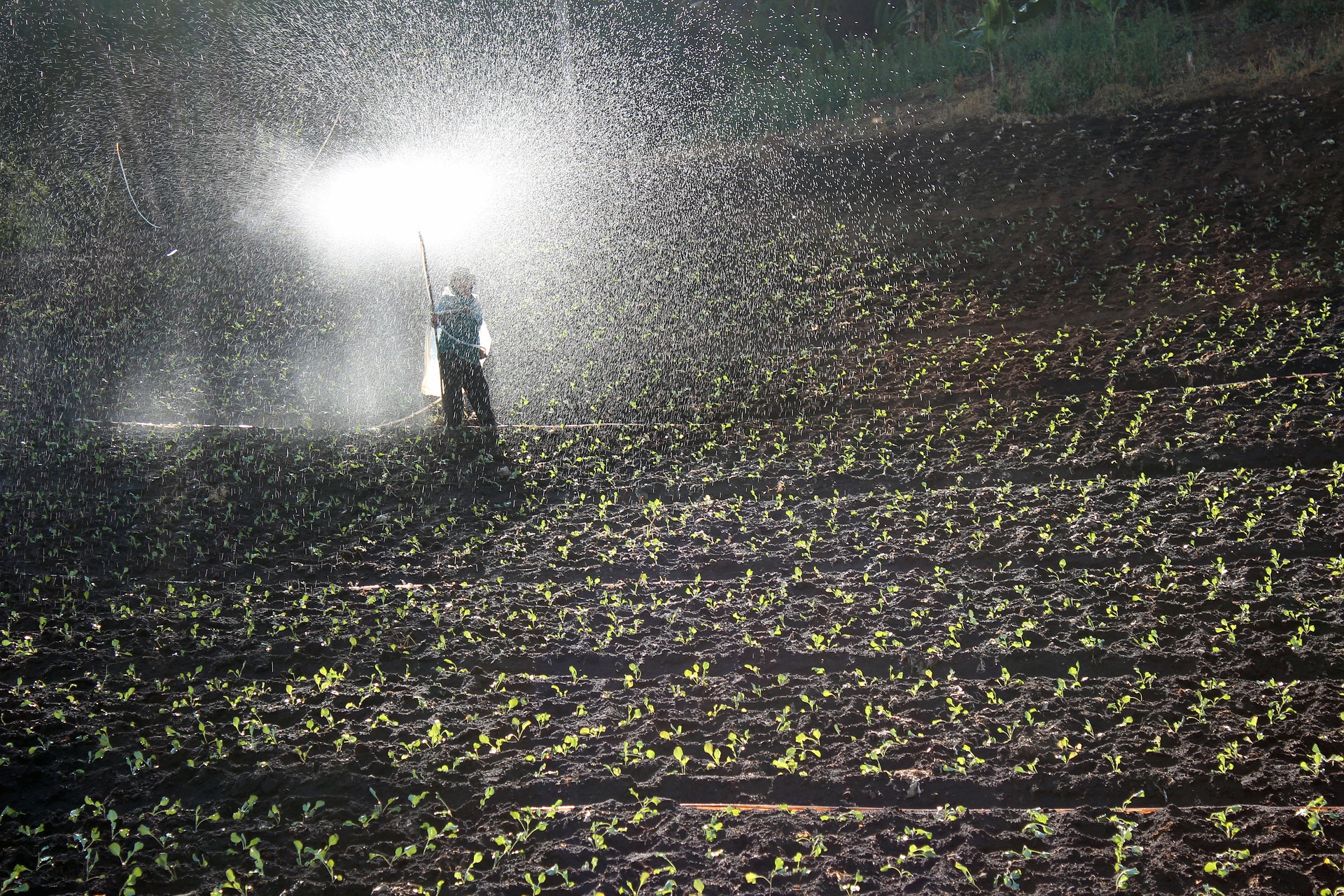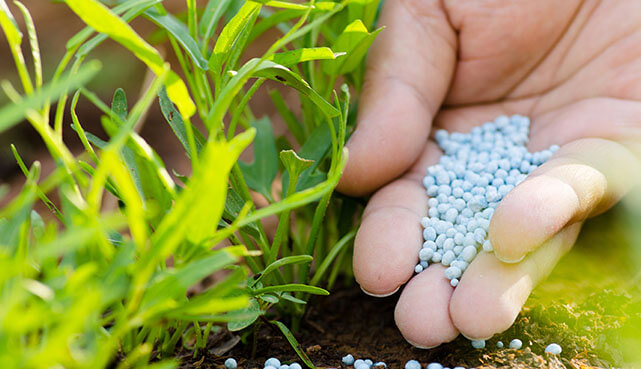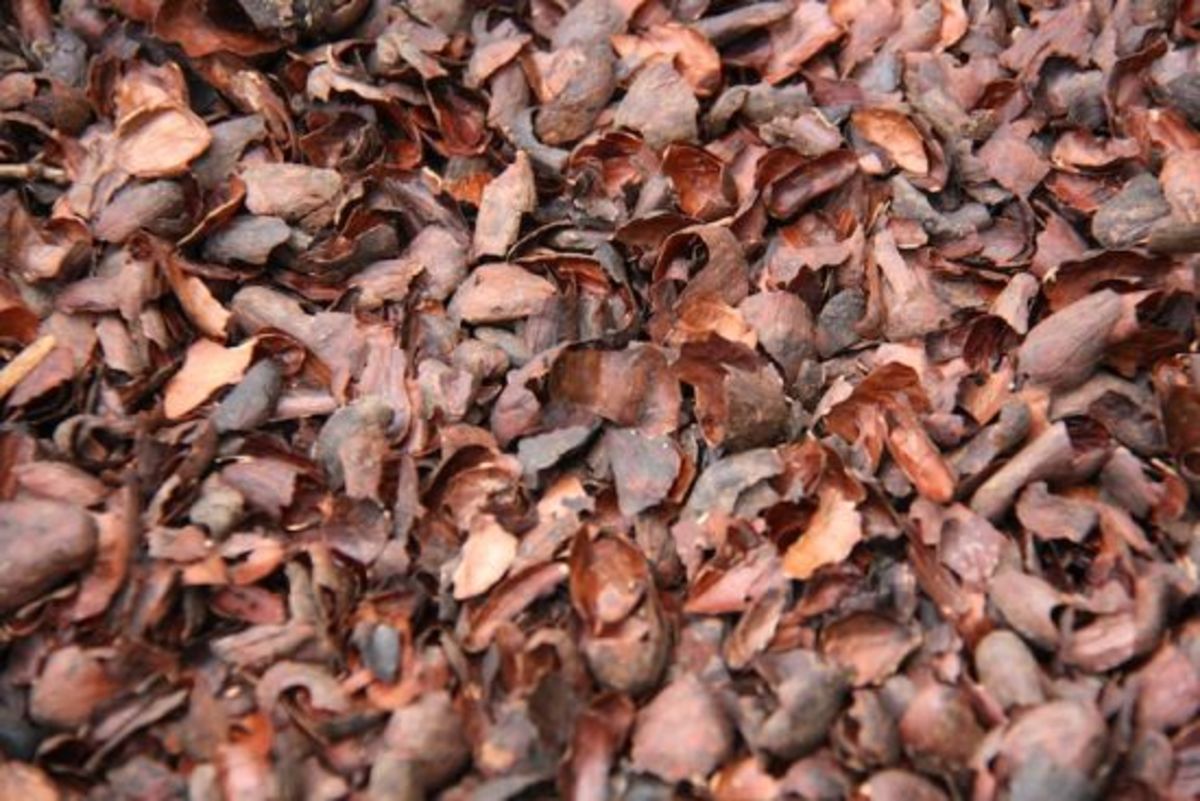It’s quite common for animals to ingest chemicals sprayed over the fields. Most chemical fertilizers contain varying amounts of nitrogen, phosphorus and potassium (potash) as indicated by the three numbers on the packaging (i.e., 30-10-10 or 10:0:40).
Most fertilizers contain insecticide used specifically to kill germs, insects, and pests that can be hazardous to home pets when consumed.
As a responsible homeowner, you should prevent your pets from wandering around the lawn for 72 hours or 3 days before the chemicals subside.

What is Fertilizer Poisoning?
Plant Fertilizer is commonly known as "Plant food." It is commonly used to fertilize plant or vegetation in the garden. The fertilizers keep plants healthy and allow them to grow faster. Most fertilizer comes with a pesticide that is used to kill plant pests from damaging the plants.
When a human or animal ingests these chemical or comes in close contact with it, they act as a poison. The fertilizer poising can range from mild to severe complications. Depending on the length of time of contact and how the fertilizer poisoning occurred, these complications may include oral burns and stomach irritation. Chemicals such as herbicides, fungicides, and pesticides in addition to the compounds such as phosphorous, iron, nitrogen are toxic when consumed in large amounts.
The immediate thing you can do when you notice your pet is suffering from fertilizer poisoning is to take it to the nearest vet or clinic. No fertilizer is hundred percent safe, even advertised as so, hence keep your pets away from the garden, lawn, or plants.
Homeowners often use fertilizers during spring and fall to sprawl up their lawn.
Types of Fertilizers
The fertilizer comes in two types; granular and water-based. These are sprayed over the plants. The chemical residue on plant’s leaves and hangs and soil can remain active for a while.
Inorganic Fertilizer
Inorganic fertilizer is composed of chemicals and chemically produced compounds. They need to more productive and highly nutritious than organic fertilizer.
Some of the popular inorganic fertilizers include Nitrogen fertilizer, phosphate fertilizer, potash fertilizer, micronutrient fertilizer, and compound fertilizer.

Organic Fertilizer
Organic fertilizer is known as farmyard manure of natural fertilizers, mainly from animals and plants. When applied, it can supply carbonic materials for plants growth. It contains organic acid and rich nutritions.
Examples of organic fertilizer are such as
a. Agricultural waste
Agricultural waste includes straws, bean pulp, cottonseed meal and the kitchen waste such as cut vegetables.
b. Livestock manure
Livestock manure is a popular form of fertilizer. It comes from livestock's waste such as pig manure, chicken manure, rabbit manure, and cow manure. Although they are very productive they contain hazardous substance such as Escherichia Coli and nematode that can harm seedling. To reduce harm, you should only apply livestock manure after composting.
c. Industrial waste
Industrial waste such as distillers' grain, vinegar residue, and sugar-free grains can be useful to reduce industrial waste and increase agricultural productivity.
d. Municipal sludge
Municipal sludge is produced by sewage treatment plants. It contributes to soil amelioration as well as reducing pollution. The biggest advantage of using municipal sludge is that it repurposes the sewage waste.
What is Mulch?
Mulch is any material that is applied or laid over the surface of the soil as a covering to conserve soil moisture, improve fertility and health of the soil, reduce weed growth, and to enhance the visual appeal.
A mulch may or may not contain organic matters. It may be permanent (e.g. plastic sheeting) or temporary (e.g. bark chips) that are applied to bare soil or around existing plants.

Mulches of manure or compost will be incorporated naturally into the soil by the activity of worms and other organisms.
Cocoa Mulch
Cocoa mulch is made from shells or hulls from the cocoa bean that is often used for home landscaping. It is chosen for its fragrance when first placed in the yard and smells faintly of chocolate. Dogs may be tempted to ingest it because of the smell. Cocoa or chocolate is harmful to dogs. Chocolate contains caffeine, theobromine, and high-fat contents which are toxic for dogs and cats
Signs of cocoa mulch poisoning include:
- Not eating
- Drooling/hyper salivating
- Vomiting
- Diarrhea
- Anxiety
- Hyperactivity
- A racing heart rate
- Constant panting
- Dark red gums
- Tremors
- Seizures
How to Prevent Pet Poisoning
The first step to stop fertilizer poisoning is to prevent poisoning. Here are a few of the steps you can undertake to ensure that your pet remains safe and healthy.
i. Keep Fertilizer Bags out of reach
An open bag of fertilizer will warmly welcome pets to nibble or taste. The direct consumption of fertilizer can cause seizure, trauma, or even death. As a responsible homeowner, you should keep the harmful substance from out of the reach of your pets. The safety of their life can only be ensured by you.
ii. Do not allow pets into the lawn
After spraying the fertilizer into your lawn, leave it for rest for at least 72 hours before you allow pets and family member to step into the lawn. The leaves and soil still consist of the chemical residue which can be harmful if ingested by pets or children. Although mild, the effects of the chemical can be troublesome.
iii. Properly wash your hand before touching your pet
It’s important that you properly wash your hand before touching or grooming your pet after dealing with fertilizer. Most foreign agents or enzymes enter your pet’s skin through touch. Your pets may easily inhale or lick the chemical residue off your hand.
iv. Use hazard-free fertilizer
There is much bio-degradable and non-hazard fertilizer available for sprawling the lawn. Care to buy the bag with least hazard. This can be beneficial for your health, your pet’s health, the quality of soil, and the surrounding environment.
v. Remove debris and dead pests
After spraying the fertilizer, you should check if there are any dead pests, chemical residue, or debris left open. These are mostly digestible and your pet may find it fascinating enough to nibble or eat altogether.
Signs of Fertilizer Poisoning
Some of the common signs of fertilizer poisoning in animals include;
- Drooling
- Nausea
- Vomiting (acute or delayed onset)
- Diarrhea
- Abnormal posture due to abdominal pain
- “Muddy” colored gums
- Severe lethargy/collapse
- Excessive tearing
- Urination
- Abnormal heart rates
- Difficulty breathing (due to bronchoconstriction)
- Tremors
- Seizures
- Death
How to treat fertilizer poisoning in pets?
The treatment of fertilizer poisoning in pets may depend on the size of the dog, the quantity of fertilizer consumed, and how long the fertilizer was on the skin or system.
- The main therapy involves supportive means as such stabilizing your pet and controlling their breathing and heart rate.
- Other steps include medication to increase urine output and bowel movements, gastro protectants for stomach issues, poison absorbents, and topical medicines for skin irritation.
- A vet will try to remove toxins from the body to bring it to normal.
If you notice any symptoms of pet poisoning, you should consider visiting the nearest veterinarian in Des Moines. An immediate medical response is important to ensure that your pet remains safe.